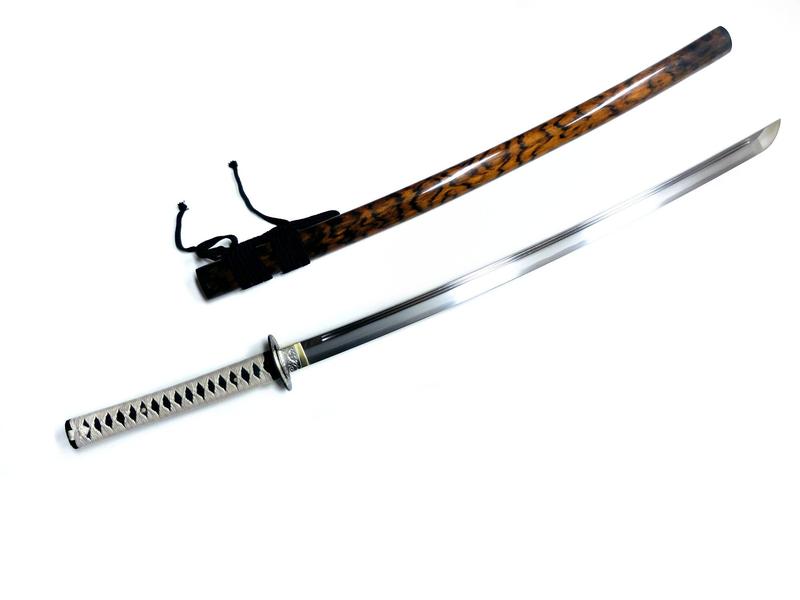Your Cart is Empty

 Traditional Japanese swords are often made using a process known as lamination. As you may already know, lamination refers to the use of multiple layers. So, instead of forging a sword with just a single layer of metal, a laminated sword is made of two or more layers of metal. To learn more about Japanese sword lamination and the benefits it offers, keep reading.
Traditional Japanese swords are often made using a process known as lamination. As you may already know, lamination refers to the use of multiple layers. So, instead of forging a sword with just a single layer of metal, a laminated sword is made of two or more layers of metal. To learn more about Japanese sword lamination and the benefits it offers, keep reading.
Maru
Most modern wakizashi and katana swords are made of a single metal, which isn't considered laminated. Japanese swordsmiths refer to this as maru or muku. With this design, the entire sword is made of a single type of metal, the most common of which is steel. Maru swords are relatively simple and easy to make, though they lack the strength and versatility of swords forged using multiple layers (see below).
Kobuse
Another method for creating Japanese swords is kobuse, which involves the use of two different types of metal. The two metals aren't mixed together, but rather one metal is applied as a jacket over the other metal. The core metal is called shingane, whereas the jacket metal is called hagane.
In feudal Japan, for instance, it wasn't uncommon for swordsmiths to make katanas with a steel core and carbon-rich outer jacket. This allowed for a stronger and sharper blade while giving the spine increased flexibility. As a result, the laminated katana could flex without breaking or otherwise sustaining damage.
Honsanmai
Some Japanese swords, however, are made of three layers of different metal. Known as h onsanmai and shihozume, this design incorporated a third type of metal: shingane (core steel).
These are just a few of the different lamination methods used to create traditional Japanese swords. The fact is that many swordsmiths have their own unique methods. While some use two or three layers of laminated metal, others may use four or five. Furthermore, some laminated blades feature a uniform coating of metals, whereas others use layers of metal in specific areas like the edge or spine.
Lamination is one of the many reasons why traditional Japanese swords are regarded as being the highest quality blades in the world. Using a single homogeneous alloy restricts the sword's properties. The sword may be strong, however, but also susceptible to breakage upon impact. When two or more layers of metal are used, it allows for a strong edge with a flexible spine. This lamination process, along with the use of differential heat treatment, makes traditional Japanese swords the best in the world.